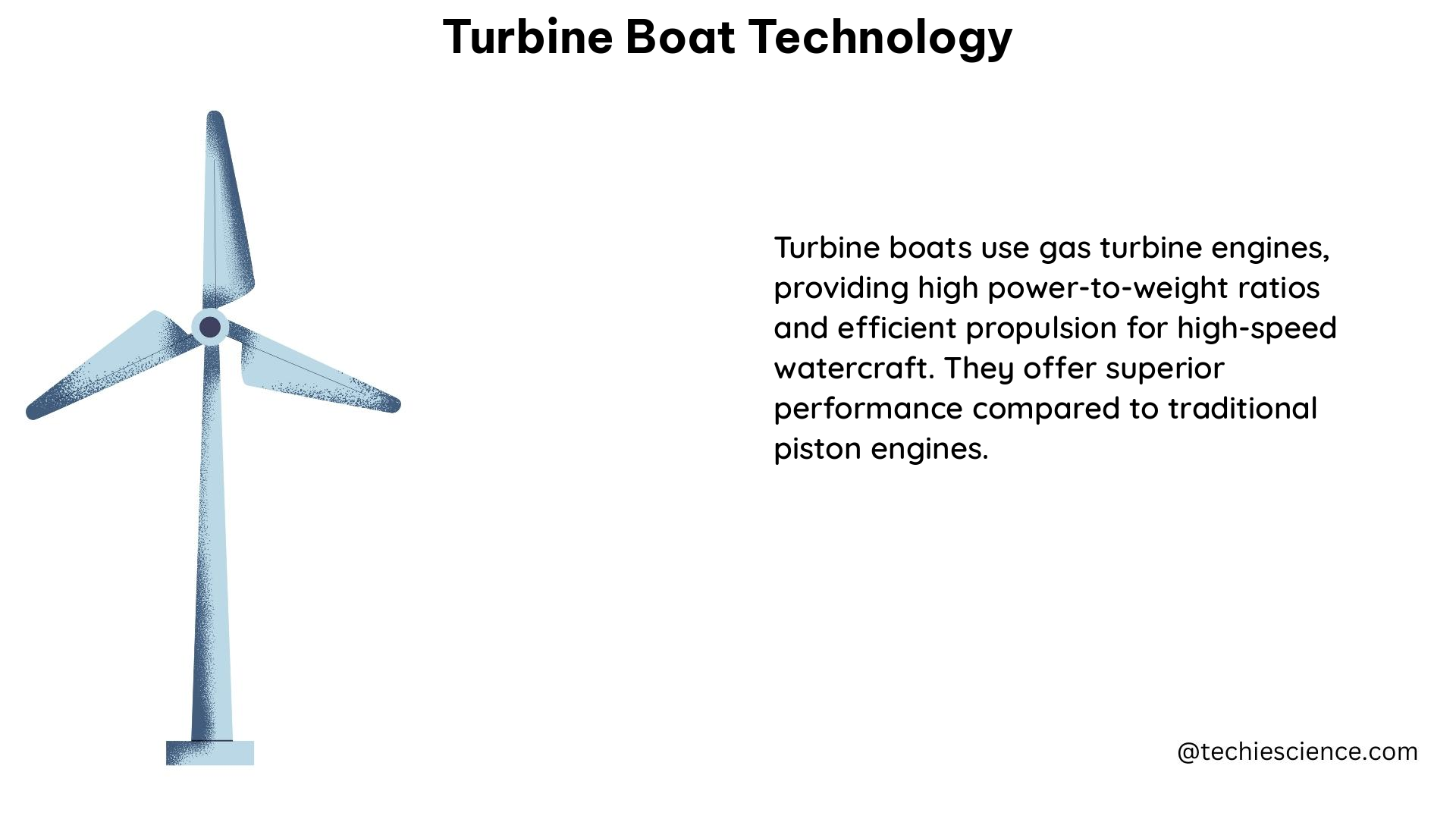Turbine boat technology is an innovative approach to harnessing renewable energy for marine transportation. This technology involves the integration of wind turbines onto ships, enabling the generation of power and reducing fuel consumption and greenhouse gas emissions. While specific data on turbine boat technology may be limited, this comprehensive guide delves into the technical details, performance metrics, and practical considerations to help you understand and implement this cutting-edge solution.
Understanding Turbine Boat Technology
Turbine boat technology utilizes wind turbines installed on the deck or superstructure of ships to generate electricity. These wind turbines can be either vertical-axis or horizontal-axis, depending on the specific design and integration requirements. The generated electricity can be used to power the ship’s propulsion system, auxiliary systems, or be fed back into the grid, reducing the reliance on traditional fossil fuel-powered engines.
Key Components of Turbine Boat Technology
-
Wind Turbines: The heart of the system, wind turbines come in various sizes and configurations to suit the specific needs of the vessel. Factors such as turbine size, blade length, and generator capacity must be carefully considered during the design phase.
-
Power Conversion and Storage: The electricity generated by the wind turbines needs to be converted and stored for optimal utilization. This may involve the use of inverters, batteries, or other energy storage solutions to ensure a reliable and consistent power supply.
-
Structural Integration: Integrating the wind turbines onto the ship’s structure requires careful engineering to ensure structural integrity, stability, and safety. This may involve reinforcing the deck, modifying the superstructure, or implementing specialized mounting systems.
-
Control and Monitoring Systems: Sophisticated control and monitoring systems are essential for the efficient operation and maintenance of the turbine boat system. These systems monitor turbine performance, power generation, and environmental conditions to optimize energy production and minimize downtime.
Turbine Boat Performance and Benefits

The performance and benefits of turbine boat technology can be quantified through various metrics and case studies:
Fuel Savings and Emissions Reduction
A study conducted by Chalmers University of Technology found that a Panamax tanker equipped with two one-megawatt wind turbines could achieve annual fuel savings of up to 16%, potentially saving USD 590,000 per year on a given route. This significant reduction in fuel consumption directly translates to lower greenhouse gas emissions, making turbine boats a more environmentally sustainable option for marine transportation.
Increased Energy Efficiency
Turbine boats can harness the power of wind to supplement or even replace traditional fossil fuel-powered engines, leading to increased energy efficiency. For example, a study by the National Renewable Energy Laboratory (NREL) estimated that a 5,000 DWT (deadweight tonnage) cargo ship equipped with a 2 MW wind turbine could achieve a 30% reduction in fuel consumption.
Operational Flexibility and Reliability
Turbine boats can operate in a wide range of wind conditions, providing flexibility and reliability in power generation. Advanced control systems and monitoring capabilities ensure that the wind turbines can adapt to changing environmental conditions, maximizing energy production and minimizing downtime.
Practical Considerations for Turbine Boat Implementation
Implementing turbine boat technology requires careful planning and consideration of various factors:
Site-Specific Design and Integration
The design and integration of turbine boats must be tailored to the specific vessel, route, and environmental conditions. Factors such as ship size, hull design, and prevailing wind patterns must be analyzed to optimize the turbine placement, size, and configuration.
Data Acquisition and Monitoring
Continuous data collection and monitoring are essential for the successful deployment and operation of turbine boats. This includes gathering strain measurements on all three turbine blades, acquiring data at a frequency above the hub rotational frequency, and monitoring environmental conditions to validate numerical models and ensure optimal performance.
Regulatory and Environmental Compliance
Turbine boat technology must adhere to relevant maritime regulations and environmental standards. This may involve obtaining necessary permits, conducting environmental impact assessments, and implementing measures to minimize the impact on marine ecosystems.
Maintenance and Servicing
Regular maintenance and servicing of the wind turbines and associated systems are crucial for the long-term reliability and performance of turbine boats. This may include scheduled inspections, component replacements, and preventive maintenance protocols to ensure the system’s continued operation.
Conclusion
Turbine boat technology offers a promising solution for harnessing renewable energy in the marine transportation sector, providing significant benefits in terms of fuel savings, emissions reduction, and operational efficiency. By understanding the technical details, performance metrics, and practical considerations outlined in this comprehensive guide, you can explore the implementation of turbine boat technology and contribute to a more sustainable future for maritime transportation.
References
- Wind Turbines on Ships – Chalmers Publication Library
- A Framework for Studying the Effects of Offshore Wind Development on Marine Ecosystems
- Toward the Instrumentation and Data Acquisition of a Tidal Turbine for Performance Evaluation
- Technological learning potential of offshore wind technology and its implications for energy transition

The lambdageeks.com Core SME Team is a group of experienced subject matter experts from diverse scientific and technical fields including Physics, Chemistry, Technology,Electronics & Electrical Engineering, Automotive, Mechanical Engineering. Our team collaborates to create high-quality, well-researched articles on a wide range of science and technology topics for the lambdageeks.com website.
All Our Senior SME are having more than 7 Years of experience in the respective fields . They are either Working Industry Professionals or assocaited With different Universities. Refer Our Authors Page to get to know About our Core SMEs.